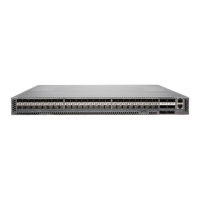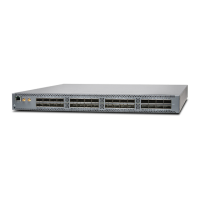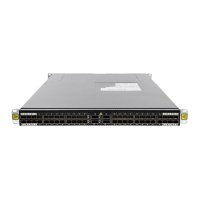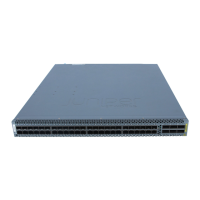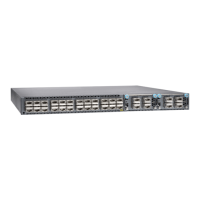To connect a fiber-optic cable to an optical transceiver installed in a QFX Series device:
WARNING: Do not look directly into a fiber-optic transceiver or into the ends
of fiber-optic cables. Fiber-optic transceiversand fiber-optic cablesconnected
to transceivers emit laser light that can damage your eyes.
WARNING: Do not stare into the laser beam or view it directly with optical
instruments even if the interface has been disabled.
1. If the fiber-optic cable connector is covered by a rubber safety cap, remove the cap.
Save the cap.
2. If the optical transceiver is covered by a rubber safety cap, remove the cap. Save the
cap.
3. Insert the cable connector into the optical transceiver.
4. Secure the cables so that they are not supporting their own weight. Place excess cable
out of the way in a neatly coiled loop. Placing fasteners on a loop helps cables maintain
their shape.
CAUTION: Do not bend fiber-optic cables beyond their minimum bend
radius.Bending the cablesbeyond their minimum bend radius can damage
the cables and cause problems that are difficult to diagnose.
CAUTION: Do not let fiber-optic cables hang free from the connector. Do
not allow fastened loops of cables to dangle, which stresses the cables
at the fastening point.
Related
Documentation
• Disconnecting a Fiber-Optic Cable from a QFX Series Device on page 376
• Maintaining Fiber-Optic Cables in a QFX Series Device on page 379
Copyright © 2012, Juniper Networks, Inc.378
QFX3000 Hardware Documentation
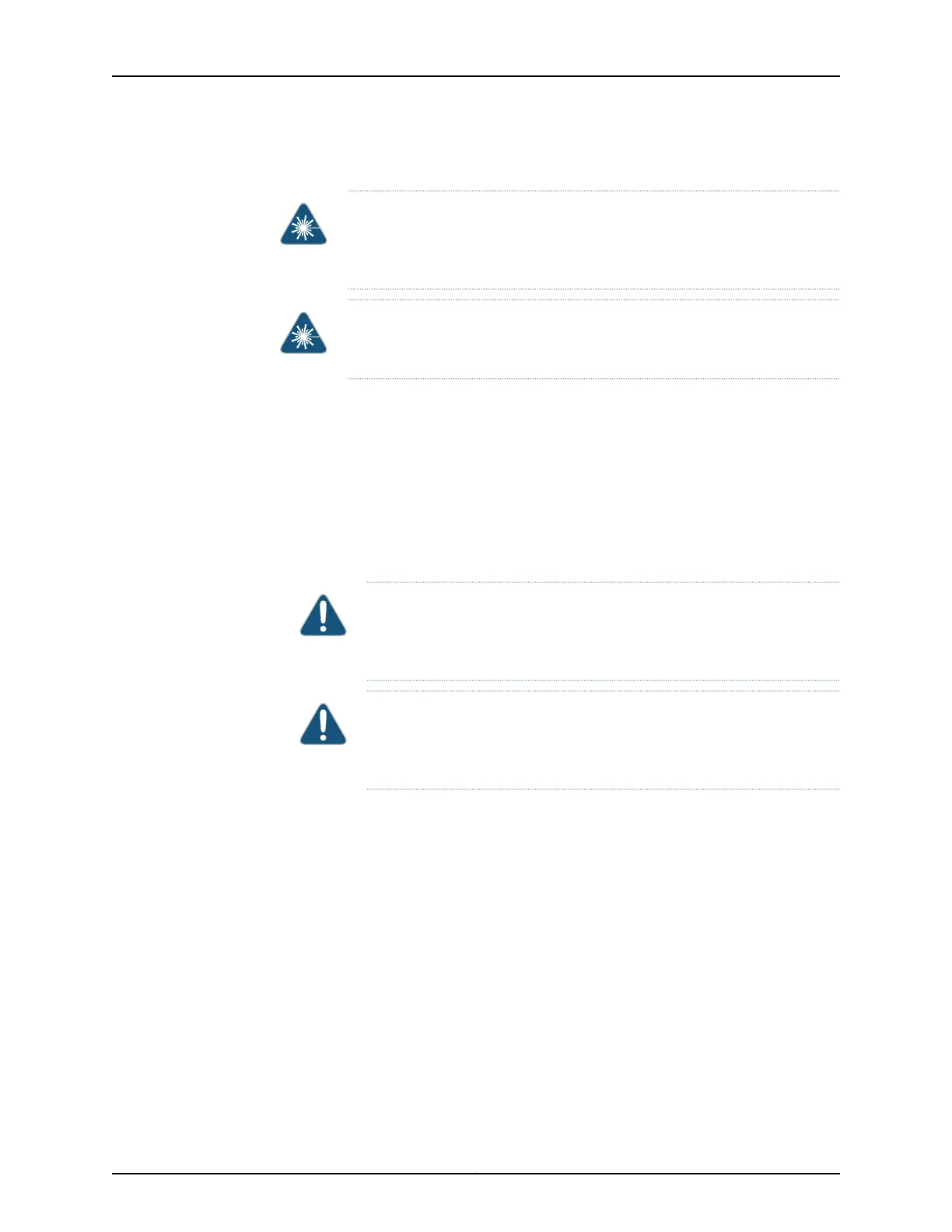